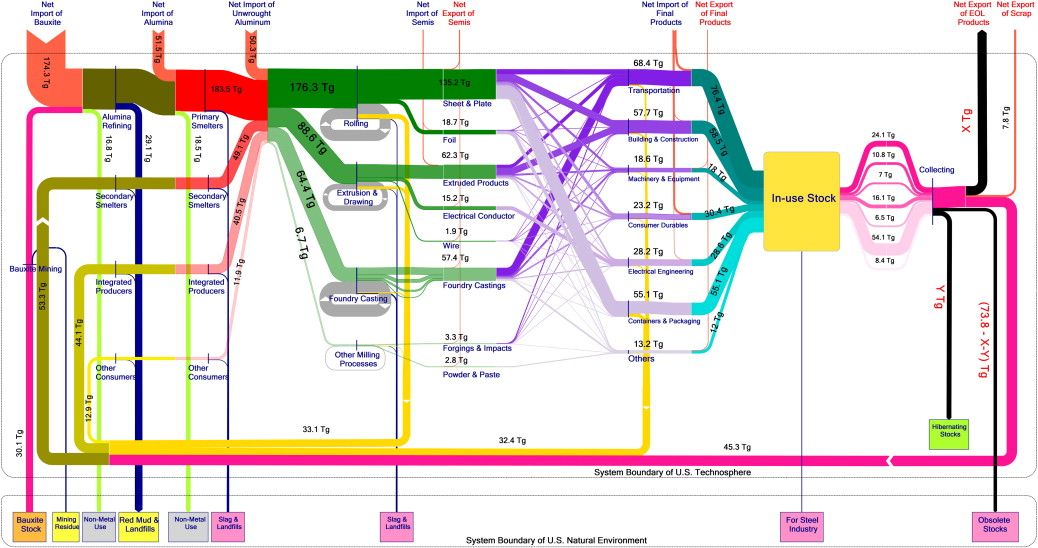Chen, Wei-Qiang*; Graedel, T. E
Ecological Economics 2012 81, 92-102. DOI: 10.1016/j.ecolecon.2012.06.008
Abstract
A dynamic analysis of anthropogenic aluminum stocks and flows in the U.S. from 1900 to 2009 has been conducted. Key findings include (1) historical cumulative aluminum input into the U.S. anthroposphere amounts to 438 Tg, with only about 35% of it accumulating in domestic in-use stock; (2) less than 5% of most flows take place before 1950, while more than 50% of them happen after 1990; (3) flows into fabrication, manufacturing, and use processes, as well as trade flows, are vulnerable to energy crises; basically, after an energy crisis, the U.S. tends to produce less primary aluminum, less semis, as well as less final products, and therefore import less bauxite and alumina but import more unwrought aluminum and final products; (4) the U.S. has been a net importer of aluminum from the life cycle perspective, with its total annual net import increasing from 1945 to 2005; (5) as a result of the continuous increase of net import, total domestic stock of aluminum in the U.S. dramatically increases in the period of 1945-2009 and amounts to 316 Tg in 2009, about nine times of that in 1900; (6) in-use stock comprises about 48% of total domestic stock in 2009 and is dominated by two sectors, Buildings and Construction (32%) and Transportation (35%); (7) total per-capita stock in use of aluminum keeps increasing until 2009 and currently amounts to 490. kg; (8) per-capita stock of aluminum in Transportation sector increases substantially after 1990s because of the light-weighting of automobiles, while that in the Buildings and Construction and Electrical Engineering sectors seems have reached a saturation level after 2005.
The cumulative anthropogenic aluminum cycle for the United States, 1900–2009.
